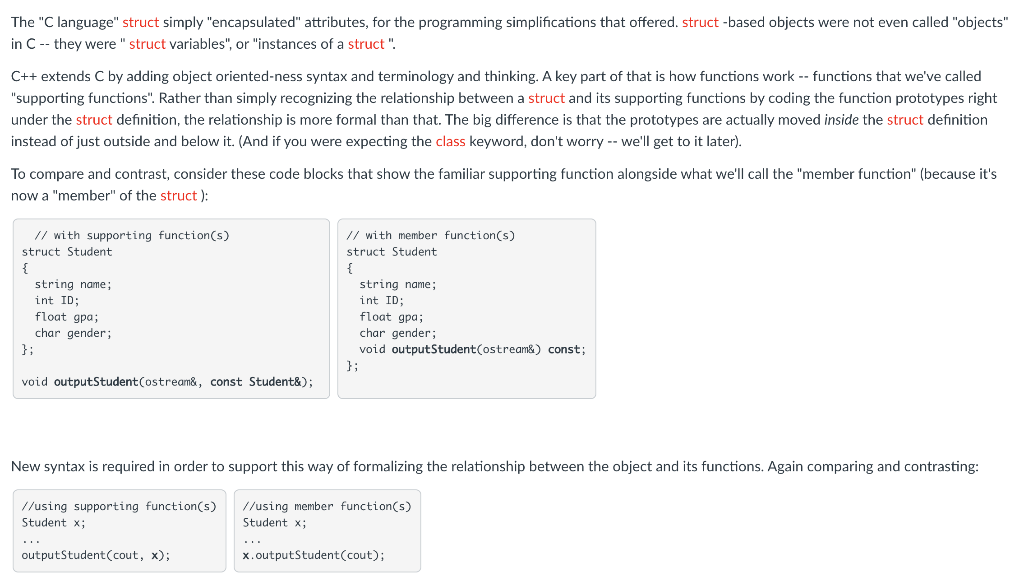Answered step by step
Verified Expert Solution
Question
1 Approved Answer
This is my original code, please revise it: put the member function inside the struct using the following methods # include # include using namespace
This is my original code, please revise it: put the member function inside the struct using the following methods
#include
#include
using namespace std;
struct Square
{
float side;
};
void outputSquare(ostream&, const Square&);
int main() {
Square a; // declare the object
a.side = 9.9; // assigning a value to an attribute
outputSquare(cout, a);
}
void outputSquare(ostream& out, const Square& x)
{
out
out
out
cout.unsetf(ios::fixed);
cout.precision(6);
}

Step by Step Solution
There are 3 Steps involved in it
Step: 1

Get Instant Access to Expert-Tailored Solutions
See step-by-step solutions with expert insights and AI powered tools for academic success
Step: 2

Step: 3

Ace Your Homework with AI
Get the answers you need in no time with our AI-driven, step-by-step assistance
Get Started


